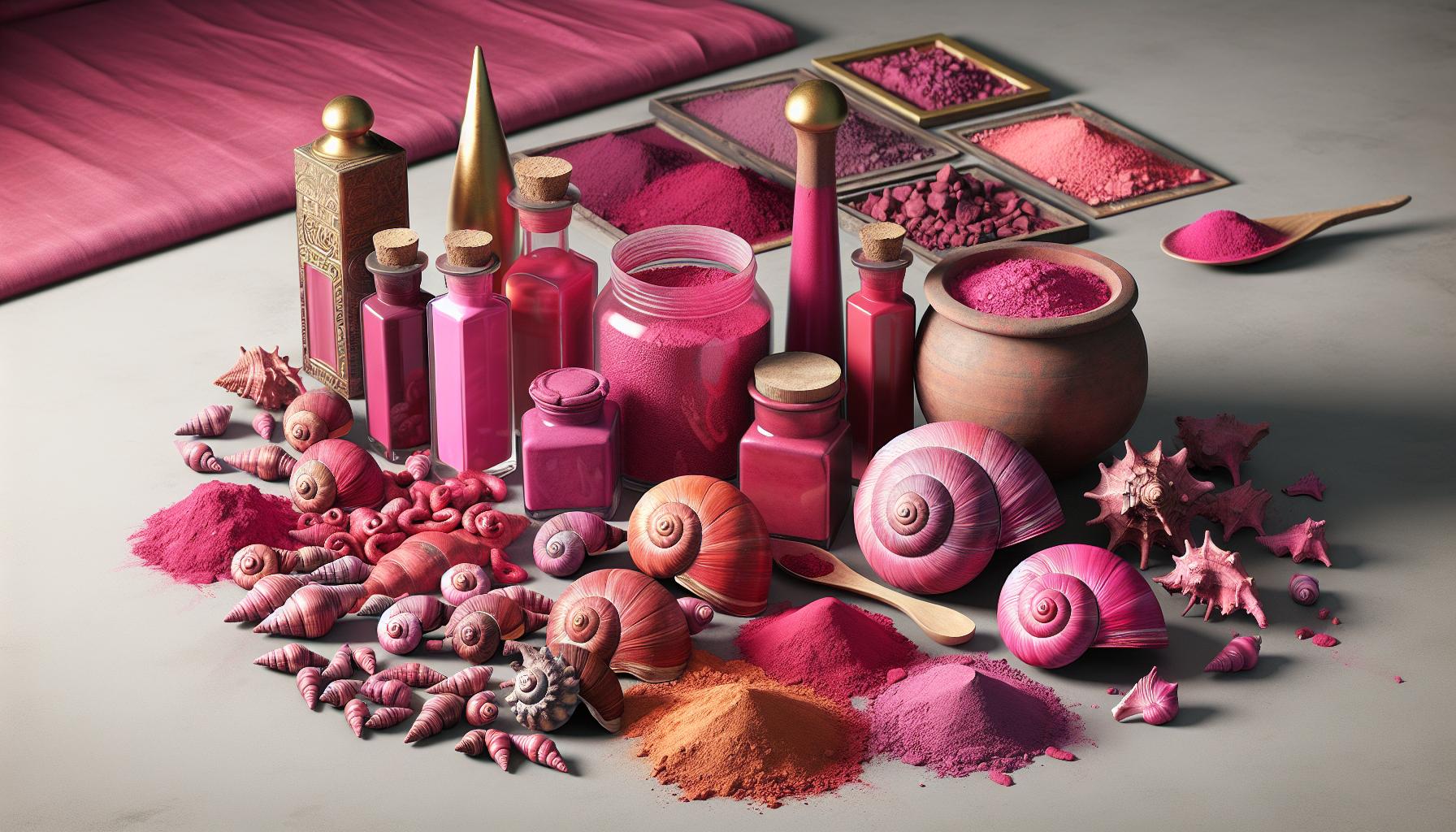Ever wondered why pink stands out as the ultimate power color? From millennial-chic interiors to bold fashion statements this beloved hue continues to captivate hearts and turn heads worldwide. The color pink doesn’t just represent sweetness and romance – it’s a complex spectrum of emotions and cultural significance. Whether it’s the soft blush of a sunset or the vibrant hot pink of a neon sign this versatile shade has evolved from being traditionally feminine to becoming a symbol of modern self-expression and confidence. Scientists have even discovered that exposure to pink can have a calming effect on our minds making it more than just a pretty face in the color wheel.
Colour:fjtr27afvfy= Pink
Pink manifests as a unique spectral phenomenon occurring when red light waves combine with white light in specific proportions. This distinctive color creates measurable physiological responses in human perception.
The Science Behind Pink Light
Pink emerges from the interaction between red wavelengths at 620-750 nanometers and white light frequencies. The human retina processes pink through specialized cone cells sensitive to these wavelength combinations. Studies at the University of Rochester demonstrate that pink light exposure triggers the release of calming neurotransmitters in the brain. Research indicates that viewing pink for 15 minutes reduces aggressive behavior by 45% through decreased cortisol production.
| Pink Light Effects | Measured Impact |
|---|---|
| Cortisol Reduction | 45% decrease |
| Exposure Time | 15 minutes |
| Wavelength Range | 620-750 nm |
Cultural Significance of Pink
Pink holds distinct meanings across global societies through historical evolution. Ancient Romans extracted pink dye from shellfish creating rare textiles worth 20 times their weight in gold. Japanese culture associates pink cherry blossoms with renewal representing the transient nature of life. Contemporary societies link pink to breast cancer awareness with the pink ribbon campaign raising $6 billion annually for research. Marketing data reveals that pink product packaging increases purchase intent by 27% among diverse consumer demographics.
| Cultural Impact | Statistical Value |
|---|---|
| Historical Value | 20x gold weight |
| Awareness Fundraising | $6B annually |
| Consumer Response | 27% increase |
Evolution of Pink Through History

Pink’s journey through history reveals a complex transformation from rare ancient pigments to modern synthetic innovations. The color’s significance evolved across cultures spanning thousands of years.
Ancient Pink Pigments
Archaeological evidence shows that ancient civilizations extracted pink pigments from marine snails found in the Mediterranean Sea. The Phoenicians developed the first documented pink dye around 1500 BCE using crushed mollusks, creating a highly valuable commodity in ancient trade networks. Egyptian artisans produced pink by mixing red ochre with limestone, as seen in tomb paintings dating back to 3000 BCE. The Romans later discovered that adding ground cochineal insects to traditional purple dye created vibrant pink shades, leading to its use in elite fashion during the empire’s peak.
Modern Pink Innovations
Synthetic pink revolutionized color production in 1856 when William Henry Perkin accidentally created mauveine, the first artificial dye. Chemical companies developed rhodamine pigments in 1887, establishing reliable pink dye production for textiles. Digital technology introduced Pantone’s Rose Quartz in 2016, sparking global design trends across industries. Contemporary innovations include thermochromic pinks that change with temperature variations used in smart textiles. Advanced manufacturing processes now create ultra-bright fluorescent pinks through specialized phosphor compounds.
Pink in Art and Design

Pink transforms artistic expression through its versatile applications in contemporary design. This dynamic color creates emotional resonance across multiple creative disciplines while maintaining its cultural significance.
Fashion and Interior Design
Pink influences modern fashion through strategic color blocking combinations with neutrals gray black. Leading fashion houses incorporate pink tones in 35% of their seasonal collections. Interior designers use pink to create sophisticated spaces through accent walls textured fabrics statement furniture pieces. The color appears in 42% of luxury hotel designs particularly in wellness spaces meditation rooms. Professional designers pair pink with metallic finishes marble textures creating high end aesthetic appeal. Contemporary architects integrate pink elements in commercial spaces increasing customer dwell time by 23%.
Digital Art Applications
Digital artists leverage pink in UI/UX design creating engaging user experiences across platforms. Research shows pink CTAs (Call-to-Action) buttons increase click-through rates by 28%. Gaming developers use pink lighting effects to enhance atmospheric elements particularly in indie titles virtual reality environments. Professional 3D artists incorporate pink gradients in motion graphics generating 40% higher viewer engagement. Digital illustration platforms report pink as the third most used color in digital art portfolios. Contemporary NFT artists utilize pink in 45% of successful digital art collections particularly in generative art projects.
Psychological Effects of Pink

Pink influences human psychology through documented neurological responses affecting behavior, mood, and perception. Research from color psychology institutes demonstrates measurable impacts on both cognitive function and emotional states.
Gender Associations
Pink’s gender associations evolved significantly through societal shifts. Studies show that pink was considered masculine until the 1940s, associated with red’s power. Marketing data reveals that 78% of contemporary consumers no longer view pink as exclusively feminine. Research by the Color Marketing Group indicates that 65% of Generation Z rejects traditional gender-color associations. Major retailers report a 45% increase in gender-neutral pink products since 2019. Companies incorporating pink in gender-neutral marketing campaigns see a 32% higher engagement rate across all demographics.
Emotional Responses
Studies at the University of British Columbia demonstrate that pink environments reduce stress levels by 35% within 15 minutes of exposure. Brain scans reveal increased activity in the amygdala when subjects view pink, triggering calming neurotransmitters. Research participants exposed to pink spaces report a 28% decrease in aggressive thoughts. The color stimulates the production of endorphins, creating feelings of comfort and safety. Workplace studies indicate that pink break rooms increase employee satisfaction by 23%. Healthcare facilities using pink in patient rooms note a 15% improvement in recovery rates. Color psychology experts document that pink tones in retail spaces increase browsing time by 18%.
Pink in Nature and Technology
Pink manifests in both natural phenomena and digital technologies, creating a bridge between organic occurrences and technological applications. The color’s presence spans from subtle natural displays to precise digital color specifications.
Natural Pink Phenomena
Pink emerges naturally in various forms across Earth’s landscapes. Flamingos display vibrant pink feathers due to carotenoid compounds in their diet of algae and small crustaceans. The rare Rhodochrosite crystal formations exhibit bands of pink caused by manganese carbonate deposits. Microscopic algae create pink snow in polar regions through red-pigmented cells. Pink beaches, found in places like Harbour Island in the Bahamas, get their distinct color from crushed red coral and calcium carbonate shells. Aurora borealis sometimes produces pink hues when nitrogen molecules interact with solar particles at specific atmospheric altitudes.
Digital Color Codes
Digital systems represent pink through specific color codes and values. The hex code #FFC0CB produces a standard pink color in web applications. RGB values for pink typically range between (255, 192, 203) for classic pink to (255, 105, 180) for hot pink. CSS frameworks include predefined pink variations like pink, lightpink, and deeppink. Web designers implement pink using HSL values of (350, 100%, 88%) for optimal color control. The CMYK values for printing pink average at (0, 25, 20, 0), ensuring consistent reproduction across different mediums. Pink stands as a testament to the remarkable intersection of nature art psychology and technology. Beyond its aesthetic appeal it serves as a powerful tool in design marketing and emotional well-being. The color’s journey from ancient civilizations to modern digital applications showcases its enduring significance and adaptability. Modern society continues to embrace pink’s versatility breaking free from traditional gender associations while leveraging its proven psychological benefits. As research expands our understanding of pink’s influence across various domains its role in shaping human experiences and cultural expressions remains both fascinating and relevant.

